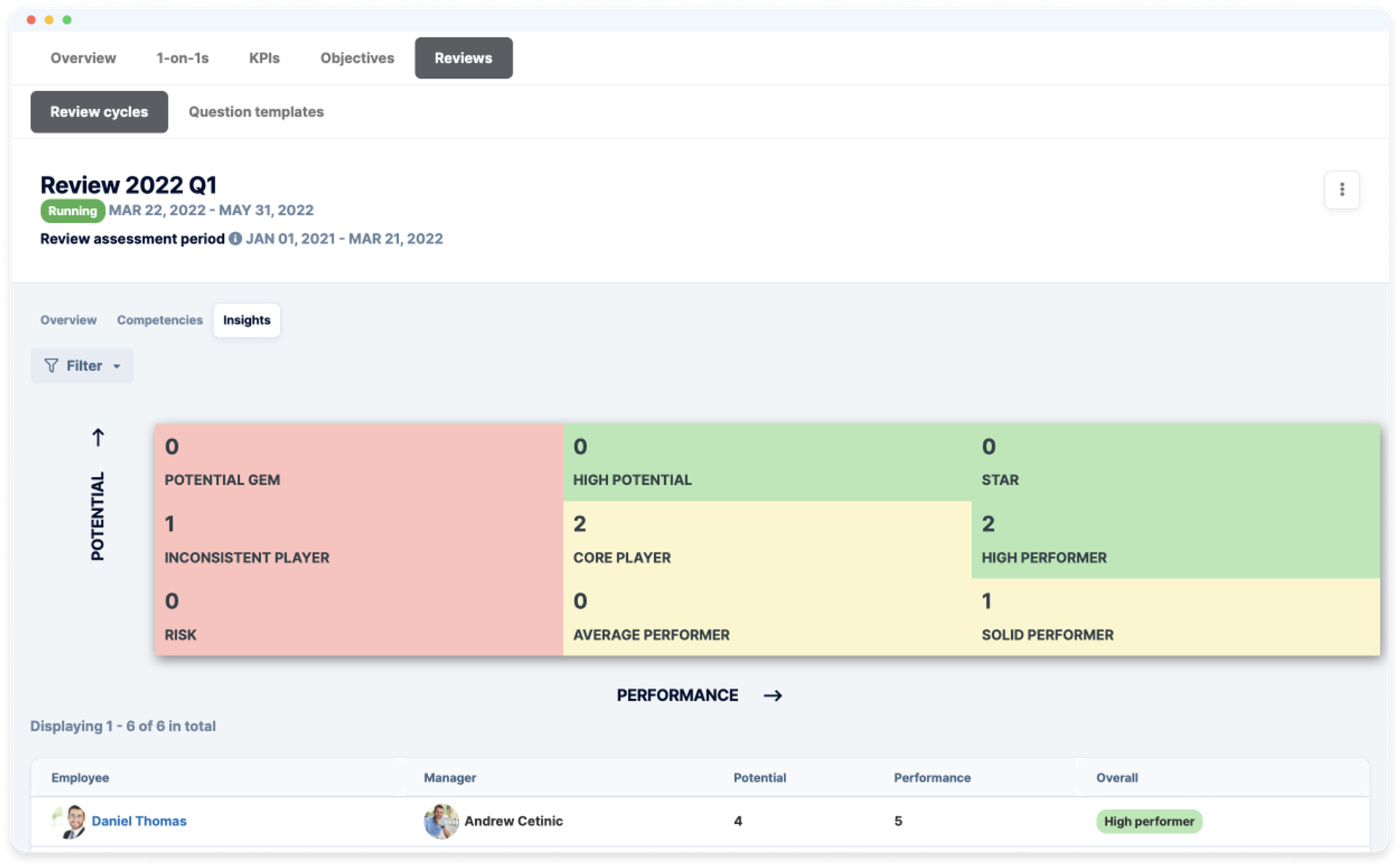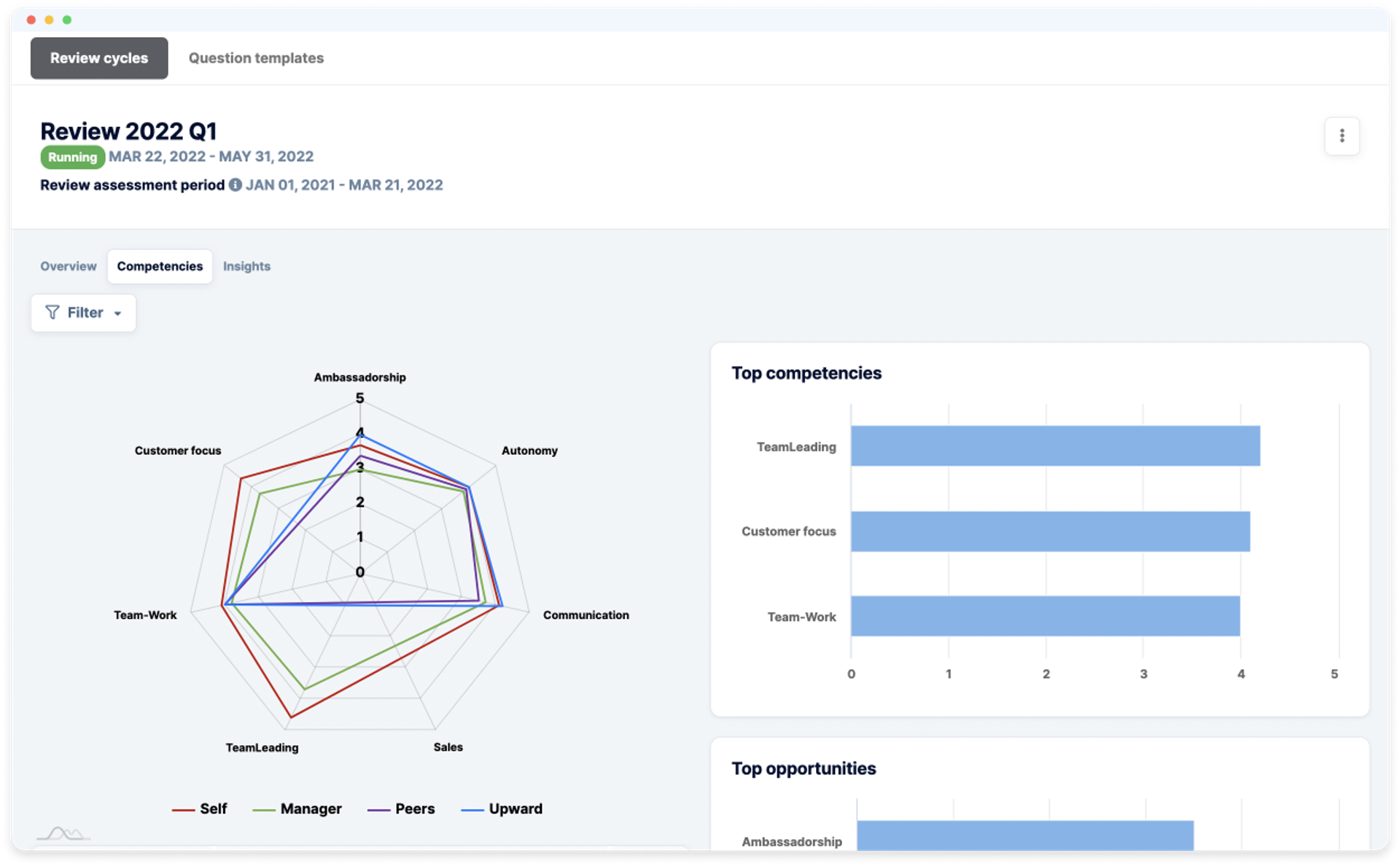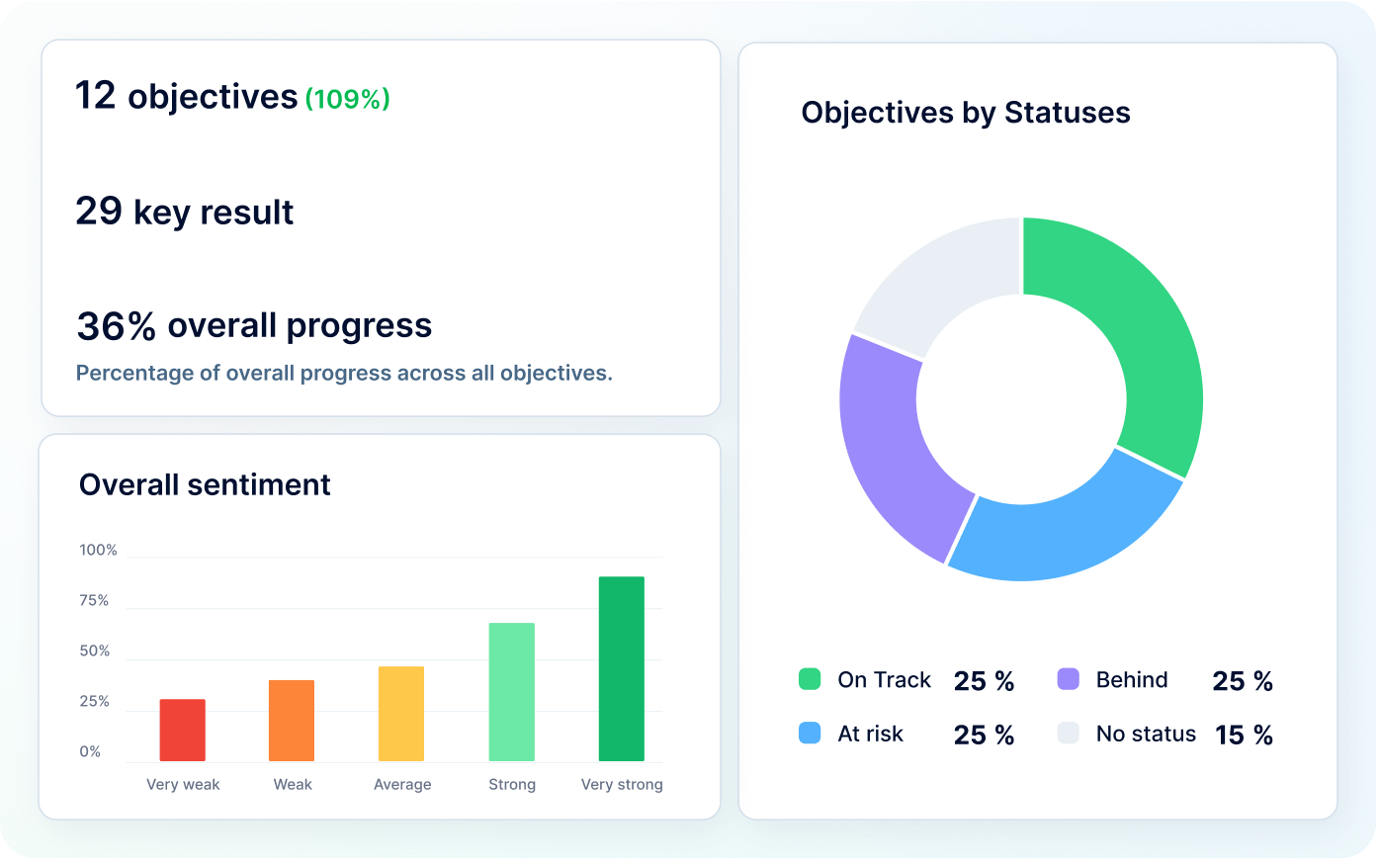
10 minutes on professional competencies: How to apply them in performance review
Imagine that you have a goal to anticipate the effectiveness and success of employees at work. Perhaps this is requested by management, or it is necessary to develop some kind of plan based on the results at the end of the period. How will you proceed? What indicators will you rely on?
Here’s another example for you. During interviews, candidates are often asked completely unrealistic things – favorite books, composer, or zodiac sign (in the author’s life, all of the mentioned cases have occurred). But few people pay attention to the hard skills of the future employee and do not build communication with the person, relying on the characteristics of their professional competencies. Nevertheless, it is precisely competencies – the key to effectiveness.
Competencies – what are they?
There are two concepts worth discussing in the context of the workflow. They are:
Competence is the set of professional and technical knowledge of an employee, their "expertise" in the industry they are engaged in. Competence is a characteristic that can be expressed through the employee's behavior. This is how the infamous competencies arise.
Professional competencies are a set of knowledge, skills, characteristics of building relationships with colleagues, and working on oneself and one's tasks, which are manifested in behavior and determine success in completing tasks and achieving goals.
In other words, it is a manifestation of oneself as a specialist that can be recorded, quantitatively assessed, and elaborated upon.
An example of a competency?
Imagine that during the conversation the recruiter asks you about skills – not so much professional as behavioral. It is precisely through the demonstration of abilities and knowledge via behavior in the workplace that competence is revealed. They ask questions about time management, the ability to build working relationships, the ability to understand the organizational structure, or to follow the company's strategy? These are competencies. Let's consider an example.
Has there been a time when the recruiter asked how independent you are in your decision-making and actions?
XXX: So, do you need supervision at work, or can you handle everything on your own?
You: Yes, I can do it myself, I am autonomous.
XXX: Excellent, you are accepted.
Autonomy is a professional competency. It depends on the experience and knowledge you have, and at the end of the period, you or your supervisor can evaluate the independence in performing tasks.
Are there typologies for competencies?
Of course. First of all, competencies may vary across the company and can be divided into:
- Individual
- Department competencies
- Division competencies
- Project group competencies
- Company competencies
Depending on the knowledge and skills needed for the job, say, for the marketing department, they must equally be present in every employee of that department. This could be the competency of "systems thinking." For the sales department, for example, the competency of "communication skills."

Competency model
There is a so-called model of managerial competencies, where competencies are divided into seven clusters depending on the manifestation of leadership qualities:
- Leadership
- Engagement
- Self-management
- Employee development
- Results orientation
- Responsibility
- Negotiation skills
If it is important for your company to track the internal growth of employees and the formation of leaders or "stars" of the team, this model will help clearly understand the level of development of qualities among colleagues. It is suggested to evaluate competencies by clusters according to categories from A to D, where:
- A – the employee demonstrates competencies in such a way that they are worth consulting and asking for advice
- B – the employee demonstrates competency at a high level for performing work tasks
- C – the employee completes tasks that align with the competency, but there are mistakes or shortcomings
- D – the employee does not perform the work at the required level for this competency, or the work requires significant corrections from colleagues
By the way, how are competencies generally used and assessed?
Using and assessing competencies for Performance Review
So, we have already determined that we should have a list of competencies before conducting the Performance Review assessment. Let's assume we have it, and now we need to somehow incorporate these competencies into the questionnaire.
The questions for assessing an employee's work over the period are based on the competencies you have selected. To evaluate one competency, you can use several questions to get a complete picture of the skills demonstrated in the work.
In order to evaluate the competency, the question is formulated accordingly. For example, let's use the previously mentioned competency “Autonomy,” and assume that the method for conducting the assessment is the 360-degree method. That is, we need to formulate two questions based on the competency “Autonomy” – one for the employee's self-assessment and one for their direct supervisor.
The question to the employee may sound like this:
How independent have you been in making work decisions during the past period?
The question for the manager will be:
How independent was Employee X in making work decisions during the past period?
Both the employee and the manager use a scale suggested by the evaluation author. Usually, this is a simple scale from 1 to 5 (Likert scale), where 1 is the most negative rating and 5 is the most positive.
If an employee rated their autonomy at 5 points and their manager rated it at 3 points, the overall score for the competency "Autonomy" is 4. When using the HRM system, the automatic calculation will show you not only the overall scores but also the difference between the two opinions – it will be displayed in the scores and on the chart, making it easy to see which growth areas to work on with the employee in the future.

What should I base my competence assessment on so that it doesn't become subjective?
Good question, isn’t it? After all, it’s not enough to just say: no, the employee was not independent, they needed help, so let's rate their efforts at 2 points. Ahead, in the final stage Performance Review, we will have a 1:1 with the employee, who will see all the ratings and will definitely ask why this happened, since they did this, that, and everything by themselves.
Therefore, it is customary not only to formulate questions based on competence but also to use its definition and indicators. They are necessary for all parties involved in the assessment to correctly understand the essence of competence.
Let's try to define the competence "Autonomy".
This ability to achieve work results independently, without the help of colleagues or managers, to develop a plan for task execution and to follow it without external evaluation and guidance. The ability to act independently and make decisions while being aware of one's responsibility.
Positive indicators of the competency "Autonomy" (if a person meets them, the assessment will be higher):
- Builds a plan for tasks and subtasks independently, does not wait for instructions from a line manager
- Is able to find solutions to problems without help from colleagues or a manager
- Can find contacts and establish communication with colleagues, contractors, and other staff on their own, without reminders
- Is capable of establishing connections and delegating responsibilities independently for the timely completion of tasks, etc.
Negative indicators of the competence "Autonomy" (if a person performs the work this way, the evaluation will be lower):
- Requires constant support and guidance from colleagues or line managers
- Cannot independently make simple decisions, seeks help and advice in everyday situations
- Unable to find contacts and build communication with colleagues or contractors
- Gets lost in work situations and is unable to figure out what is happening, etc.
How to develop an employee using competency assessment results?
Here we are at the most interesting part. Depending on which indicators are triggered when assessing your employee, and what ratings they receive, you can determine which category your colleague belongs to. Remember we wrote above about leadership qualities? Well, there are:
- Competency Matrix of Players in the Company from A-player to E-player. Depending on the manifestation of different competencies, you will see what kind of player the employee is and work with them on development options if the potential allows.
- n Boxes Matrix. Using the two competencies of "Effectiveness" and "Potential", you can track how the employee performs in the team, whether they are burned out, and if they fall into risk groups.
Professional competencies will not only give you an advantage and objectivity in evaluating employees, but it is also a whole tool for screening the team, working on risks, moral issues, areas for growth and development, nurturing leaders within the team, and options for promotions and transfers to more beneficial positions for the employee.
So start small – create a list of these competencies and carefully think through their indicators. And practical application will not be long in coming.
Get started with PeopleForce today
Automate your HR routine to create a high performance culture in your company. PeopleForce is your best HRM alternative to stay business driven but people focused.

Recent articles
How much time HR platform saves for HRs and admins
Discover how modern, all-in-one HR software simplifies complex processes, ensures compliance, and boosts efficiency to help HR teams manage growing responsibilities with ease.
How to create a perfect retention strategy with the HR platform
Employee retention has become a major headache for businesses. Many companies, even the most successful, can be dealing with unhappy employees behind the scenes.
Empowering HR management for business through modern HR software
Employee retention is one of the top five priorities for human resource managers. Struggling to keep your talent, let alone empower employees to perform their best? If so, hi, you’re in the right place.

